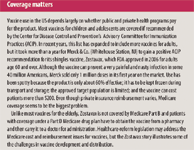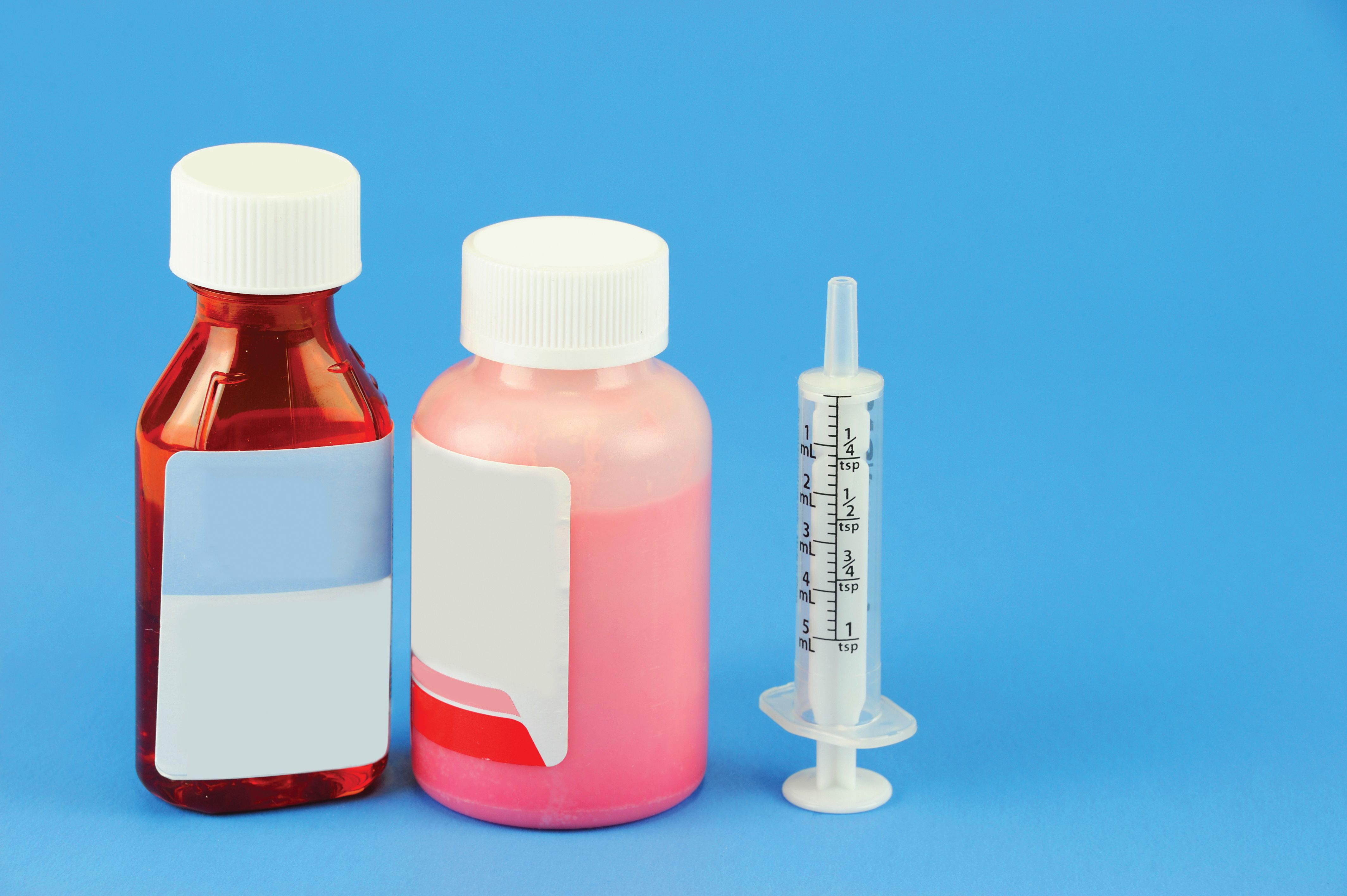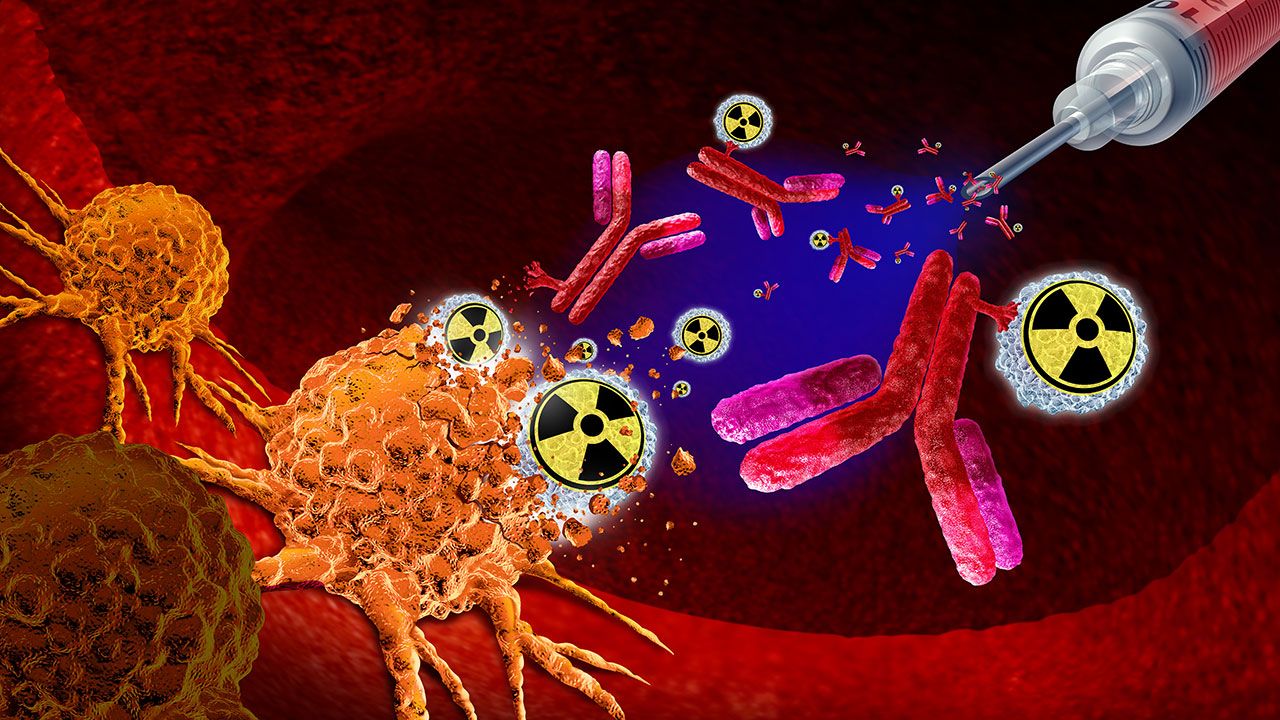News
Article
Pharmaceutical Technology
Manufacturers Look to Vaccines for Growth and Innovation
Author(s):
Vaccine R&D is surging, but continues to raise manufacturing and regulatory challenges.
The vaccine business is booming, spurred by worldwide efforts to contain the global influenza pandemic and to halt the spread of AIDS and other lethal infectious diseases. National health agencies ordered millions of H1N1 swine-flu vaccine doses in 2009, prompting manufacturers to ramp up production as well as investment in research and development (R&D). Since 2000, the global vaccine market has almost tripled to reach as estimated $20 billion. Yet, delays in producing the huge quantities of requested pandemic flu vaccine has raised questions about continued reliance on decades-old vaccine production methods and delivery technologies.

Jill Wechsler
Robust pipeline
The good news is that a record 120 vaccines are now available to meet the health needs of people all over the world, and a significant number of vaccine candidates are moving through the R&D pipeline. More than 80 new products are in late-stage clinical testing, including some 30 that target untreated diseases, according to the "State of the World's Vaccines and Immunization" report published in October by the World Health Organization (WHO) and UNICEF.
The surge in vaccine development during the past decade has produced new vaccines for meningococcal meningitis, rotavirus diarrheal disease, pneumococcal disease and cervical cancer caused by human papillomavirus (HPV). Public-private partnerships, many funded by the Bill & Melinda Gates Foundation, are developing vaccines to counter infectious diseases that kill or disable millions of people in developing nations.

In Washington This Month
The PATH Maleria Vaccine Initiative recently announced Phase III trials for a promising antimalarial vaccine developed by GlaxoSmithKline (GSK, London), plus plans to continue the search or more effective preventives. Merck & Co. (Whitehouse Station, NJ) has linked up with Britain's Wellcome Trust to develop more affordable and heat-stable vaccines for developing countries. In addition, an initiative to develop a vaccine against Dengue fever reports several candidates ready for Phase II and III clinical trials.
There's also progress on the HIV/AIDS vaccine front, despite a let-down following initial reports last year that overhyped the benefits of an AIDS vaccine tested in Thailand. Early data indicating a low infection rate among some 16,000 participants proved to be inconclusive, but still generated optimism about moving forward research for a preventive against AIDS infection.
The burgeoning vaccine business is attracting more Big Pharma investment. Johnson & Johnson (New Brunswick, NJ) recently linked up with Crucell NV (Leiden, The Netherlands) to develop vaccines. Abbott Laboratories (Abbott Park, IL) is purchasing Solvay's (Brussels) drug and vaccine business to expand its presence in the global vaccines market. Pfizer's (New York) recent acquisition of Wyeth (Madison, NJ) makes it a lead player in the field. Sanofi-aventis (Paris) aims to double the firm's vaccine business over the next five years, according to CEO Chris Viehbacher. GSK is investing $40 million in an antismoking vaccine under development by Nabi BioPharmaceuticals (Rockville, MD). And Merck recently hired Julie Gerberding, former director of the US Centers for Disease Control and Prevention (CDC), to reinvigorate its vaccines division. Moreover, the search for cancer vaccines is going strong, supported by draft guidance from the US Food and Drug Administration on how to conduct clinical trials to test new therapies designed to simulate an immune response against tumors.
Although much of the growth in vaccine sales reflects purchases of newer, more costly products in western countries, the market expansion also supports higher immunization rates around the world. A record 106 million children were administered the traditional roster of childhood vaccines in 2008, according to WHO. Global immunization has reached 82%, up from only 20% coverage in 1980. But international health officials warn that about 24 million children still do not receive routine vaccines, a shortfall that would cost just $1 billion more per year to address. The Global Alliance for Vaccines and Immunization (GAVI), a public-private partnership, strives to fill the gaps and is currently running a campaign to immunize 130 million children against pneumonia with Haemophilus influenzae type b (Hib) and pneumococcal vaccines.
Pandemic pitfalls
Still, the vaccine business carries considerable risks. Pfizer has run into delays gaining FDA approval of its improved Prevnar 13 vaccine for pneumococcal disease in children, despite its priority-review status and strong recommendation for approval by an advisory committee last November. Merck has found it hard to sell its shingles vaccine Zostavax largely due to Medicare reimbursement complications (see sidebar, "Coverage matters").

Coverage matters
The H1N1 swine-flu vaccine shortage in October and November brought home the perils involved in influenza vaccine development and production. Last July, US government officials predicted that vaccine makers would produce 80–120 million doses by mid-October 2009, and public health agencies ramped up for a major vaccination drive. The government, along with vaccine producers, lost considerable credibility when only 40 million doses were available in September, and some 20 million Americans had already been hit by the new flu.
Health and Human Services (HHS) Secretary Kathleen Sebelius said she relied on industry predictions that turned out to be wildly overly optimistic. Meanwhile, vaccine makers claimed they kept health officials informed of technical problems and resulting delays at various steps in the manufacturing process.
The 2009 pandemic flu was supposed to demonstrate the viability of US government plans for responding to health emergencies. The 2004 closure of a Chiron vaccine-manufacturing plant in Liverpool, England, which cut off half of the US flu vaccine supply that year, had ignited concerns about the nation's ability to ramp up its emergency response to biological attacks and global pandemics, resulting in multiple programs to deal with such crises.
Speedy production of the H1N1 vaccine, however, was hampered by a very tight development timeline. Manufacturers first had to complete production of millions of doses of seasonal flu vaccine for the regular 2009 flu season. Even though scientists had plenty of eggs to inject with the H1N1 seed virus in late May, vaccine production took longer than expected because the yield in each egg was much lower than with the seasonal influenza viral strain, a problem not immediately recognized due to difficulties developing a suitable potency test for the new product.
FDA received some of the blame for delays in providing an effective H1N1 vaccine, and Commissioner Margaret Hamburg admitted to being disappointed and frustrated that the production process was not smoother. But she told the author in November that she prefers to regard the response from FDA and industry as "quite remarkable in terms of how much has been mobilized in response to a previously unrecognized strain of flu virus." Some of the disappointment may stem from over-optimism in predicting how much vaccine would be available when. "Sadly, we know that it's the nature of manufacturing vaccines to have some unexpected delays, and it's the nature of science to have unanticipated problems emerge."
One initial unknown was whether one dose would provide sufficient protection to patients, or if re-vaccination would be necessary. Clinical-trial results indicated that the new H1N1 vaccine was sufficiently potent to support a single dose in adults and two doses in young children. But low potency remained a problem for vaccine makers: AstraZeneca's (London) MedImmune had to recall nearly 5 million doses of its nasal-spray vaccine in December 2009, while sanofi-aventis pulled 800,000 doses in pre-filled syringes for young children.
By then, the flu plague was ebbing, and manufacturers faced a new problem: more vaccine than anyone wanted. Last month, the French government moved to sell millions of doses to countries in the Middle East and Latin America and to cancel sizeable orders from sanofi, GSK, Novartis (Basel, Switzerland), and Baxter (Deerfield, IL). Germany and other European countries quickly followed suit.
Eggs versus cells
Perennial difficulties in calculating flu vaccine demand and meeting production goals has generated efforts to shift from the use of fertile chicken eggs to produce flu vaccine, a method established in the 1930s, to cellular-based methods. The traditional system has remained in use because the influenza virus grows well in eggs, an important feature for fast production of a viral strain that changes every year. Manufacturers are beginning to augment egg-based vaccine production with cellular methods, but vaccine experts warn that the change is no panacea for the tricky process of producing a sufficiently potent and pure vaccine very quickly each year.
A shift to cell-culture vaccine will not transform influenza-vaccine production, but could lead to more reliable products and faster scale-up, noted Jesse Goodman, FDA chief scientist, at a December 2009 seminar on advances in influenza vaccine technologies at the National Institutes of Health (NIH). For years, there have been cell-culture vaccines for mumps, measles, polio, rubella, and other diseases, he explained, but the approach has not been adopted for influenza because it can take a long time to get a good yield out of cell cultures.
Shifting to cell culture doesn't cut off that much time, added Anthony Fauci, director of NIH's National Institute of Allergy and Infectious Diseases (NIAID), but he believes that it can establish a more flexible surge capacity. Making the transition from egg- to cell-based production "will take some time," Fauci said, "but eventually we will get there."
As part of its mission to fund research and production of public health medical countermeasures, HHS' Biomedical Advanced Research & Development Authority (BARDA) has awarded grants and contracts during the past five years to expand manufacturing capacity for pandemic influenza vaccine. For example, BARDA funds construction of new facilities and retrofitting of existing plants. The goal is to create more robust, flexible, and scalable manufacturing systems that can produce 150 million doses in six months, explained BARDA director Robin Robinson at the NIH seminar. Cell-based vaccine production, according to BARDA, could meet surge capacity needs more successfully because cells could be frozen and stored in advance of an epidemic.
BARDA's manufacturer grants, which total $1.3 billion, include $487 million to Novartis to construct a cell-based pandemic and seasonal-flu vaccine manufacturing facility. The new plant opened in late 2009 and is scheduled to be operational in 2011. The agency also is establishing a network of formulation and fill–finish manufacturers for emergency vaccine production and distribution.
New platforms
The real "endgame answer" to pandemic and seasonal-flu vaccine production problems, according to Fauci, is to develop a universal flu vaccine that could be administered in childhood and last a lifetime, as with most vaccines against infectious disease. Such a discovery could reduce the need to produce 120–150 million doses of a new influenza vaccine each year in the US, at a cost of $2.8–$4 billion. "It is doable," he says, noting that researchers already are identifying possible vaccine targets that don't change with each year's seasonal flu strain.
Scientists also are looking for innovative manufacturing platforms such as DNA-based and microbial-vector vaccines that can accelerate vaccine production. Protein Sciences (Meriden, Connecticut) developed a recombinant vaccine that places a flu virus gene into an insect virus called baculovirus, but the company has run into delays gaining FDA market approval for the resulting FluBlok vaccine due to safety concerns. Novavax (Rockville, MD) has reported promising clinical results for its virus-like particle vaccine being tested in Mexico.
Increased use of adjuvants to enhance patient response also could make influenza-vaccine manufacturing more efficient. Novartis and GSK produced H1N1 swine-flu vaccine more quickly last year in Europe where regulators have authorized vaccines with adjuvants that require less antigen for each dose. FDA is looking at the potential of new adjuvants to produce a more robust immune response from a vaccine, but there are concerns that adjuvants also may cause inflammation and autoimmune responses. FDA's Goodman seeks a better understanding of how adjuvants work and how they can boost the desired immune response without raising added safety issues.
Regulatory responses
The desire to develop more vaccines to meet global health needs has highlighted vaccine regulation in the US and abroad. Although FDA streamlined its testing and data requirements for H1N1-vaccine candidates, manufacturers would like to see a more coordinated international approval process. The WHO vaccine prequalification process takes approximately 18 months, in addition to all the work involved in licensing a product with FDA or European authorities.
FDA is working closely with WHO to improve this process. One idea is to couple US or European Union licensure of a new vaccine with WHO prequalification to spur world access to the new product, explained acting director of FDA's Center for Biologics Evaluation and Research Karen Midthun at a November conference on global vaccine development sponsored by the Drug Information Association. FDA is providing advice on clinical-trial issues for global vaccine development, helping to assess new technology for vaccine manufacture, and working with WHO to help build regulatory capacity in developing countries.
"We are poised for a transformation in how we produce and use influenza vaccine," Goodman said, noting that these efforts align with FDA's goal to strengthen the agency's scientific infrastructure, particularly for novel technologies and products that can improve public health. FDA is, for example, looking to use molecular biology to improve the way the agency assesses new influenza-virus strains and to test for potency, purity, and sterility in lot release.
A December 2009 report from the Institute of Medicine (IOM) urges a more coordinated US approach to vaccine development and safety monitoring under a strengthened National Vaccine Program Office. The program would target support for vaccine R&D to untreated diseases, focus more attention on vaccine safety issues, expand healthcare plan coverage for all recommended vaccines and better address fears and misinformation about vaccine effectiveness and safety.
Jill Wechsler is Pharmaceutical Technology's Washington editor, 7715 Rocton Ave., Chevy Chase, MD 20815, tel. 301.656.4634, jwechsler@advanstar.com
Newsletter
Get the essential updates shaping the future of pharma manufacturing and compliance—subscribe today to Pharmaceutical Technology and never miss a breakthrough.






